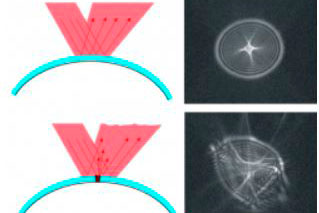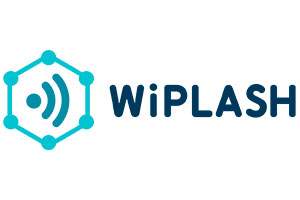
A new energy optimization system for teleworking assistance
October 19, 2020
A new, non-invasive ophthalmological instrument for the diagnosis of dry eye based on photonic techniques
October 28, 2020The research group N3Cat (NaNoNetworking Center in Catalonia) of the UPC leads the WiPLASH (Wireless Plasticity for Heterogeneous Massive Computer Architectures) project to develop processors for artificial intelligence and automatic learning that are much faster and consume less energy than the current ones.
The aim of WiPLASH is to develop miniaturized, wireless graphene antenna that operate in the terahertz band to provide plasticity and reconfigurability for future computing platforms.
To date, computer processors or chips have been of two types: general purpose that can undertake any function with certain velocity, and processors that are ultraspecialized in a specific task, which carry out just one function in a very efficient, fast way. One example is the real-time facial recognition technology that most new smart phones include. This is a sophisticated authentication method that enables a user to unlock their device or verify payments. In this case, a processor can carry out hundreds of thousands of millions of operations per second to process the images.

The prototype of the processor that will be developed in the WiPLASH project is designed for artificial intelligence and automatic learning, disciplines that have been growing exponentially in recent years. When an algorithm, which is a programming code, is run through a large server it consumes an enormous amount of energy. That is why miniaturized wireless graphene antennas are key. They are up to a hundred times smaller than a metal antenna and can operate at extremely rapid frequencies of terahertzs. WiPLASH will verify whether these graphene antennas enable communication networks within a chip for artificial intelligence processors.
These new computing chips could be used in implants in the body, the internet of things, mobile phones, large servers and will open the door to a disruption in which artificial intelligence reaches more places and where size and energy consumption are critical.
The WiPLASH project lasts three years and has received three million euros from the European Commission as part of the Horizon 2020 programme, within the FET OPEN call. Participants in the project include seven European research centres and computing companies.
Technology
Sector
Topic
You want to know more?
Related Projects
- The Innovation in Materials and Molecular Engineering – Biomaterials for Regenerative Therapies (IMEM-BRT) research group at the Universitat Politècnica de Catalunya – BarcelonaTech (UPC), in collaboration with the Institute of Chemical Research of Catalonia (ICIQ), has developed polymer resins derived from plant-based materials to reduce the dependence of 3D printing on fossil fuel-based resins.
- The company Natural Machines and the Heat and Mass Transfer Technological Centre (CTTC-UPC) at the UPC have completed the EFICIENT3D project, during which a low-energy cooking system was developed by integrating advanced heat transfer technologies into the 3D food printer, Foodini, commercialised by Natural Machines.
- The Centre for Advanced Technologies in Mechanics (CATMech) at the Universitat Politècnica de Catalunya - BarcelonaTech (UPC) is involved in a project to explore additive manufacturing technology with concrete to provide innovative solutions to the construction market. The project, called ADRIANO, aims to develop a real-time control system for the concrete manufacturing process, to estimate the expected outcome and anticipate decision-making on its various stages.
- A team of researchers from the Manufacturing Technologies Research Group (TECNOFAB) at the Universitat Politècnica de Catalunya - BarcelonaTech (UPC) has participated in BRUVIT. The aim of this project is to develop and validate the ball burnishing process assisted by ultrasonic vibration to improve the hardness and surface integrity of parts on a parallel lathe.




